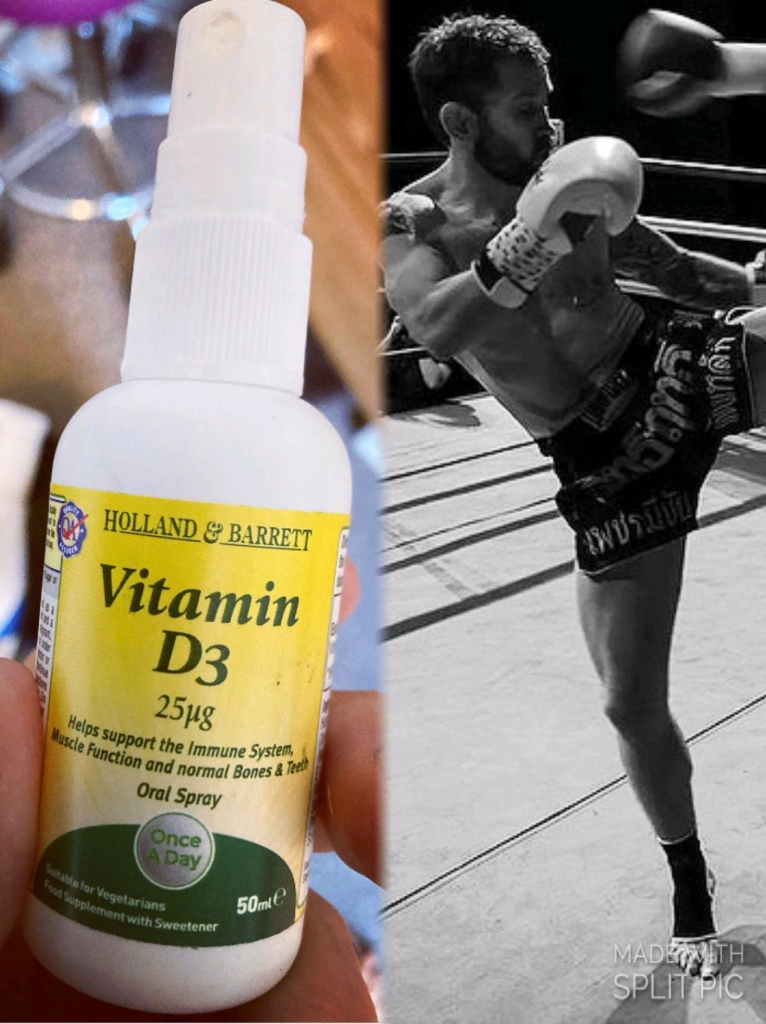
This short post will detail why Vitamin D is so important and if you’re not blessed to live in a predominantly sunny part of the world, I’ll give you a strategy on how to best supplement for it.
Vitamin D is a fat soluble vitamin that is mainly produced via the action of sunlight on the skin. It does a super critical job, but most of the population (in the UK anyway), are deficient. As a deficiency, this can be especially a problem for athletes.
Why it’s important
Vitamin D is probably best associated for it’s role in supporting strong teeth and promoting the growth and strengthening of healthy bones. This is as it helps you to absorb calcium and phosphorous from your food whilst helping to regulate the concentration of calcium in the body, known as calcium homeostasis.
Additional to its role in bone health, Vitamin D is also important for normal skeletal muscle development and in optimising muscle strength and performance. For example, supplementation with various forms of Vitamin D in older adults has mostly shown reduction in fall risk and improvements in tests of muscle performance.
A lesser known fact is that vitamin D is essential in maintaining the health and functioning of your immune system. Vitamin D enhances the pathogen-fighting effects of monocytes and macrophages — white blood cells that are important parts of your immune defense — and decreases inflammation, which helps promote immune response.
Vitamin D’s role within immune system defence is important when considering anyone who is placing a high level of additional physiological and/or psychological stress upon their body. A perfect example is the hard training athlete preparing for competition. The pressure of maintaining a high training load additional to the phycological burden of competing can mean such athletes are vulnerable to compromised immune systems and as such, at a higher risk of picking up infections and viruses.
Food Sources
Although the primary and preferred source of Vitamin D is via sun exposure, there are some food sources that contain a small amount.
These are:
- oily fish – such as salmon, sardines, herring and mackerel
- red meat
- liver
- egg yolks
- fortified foods – such as some fat spreads and breakfast cereals
Supplements
Vitamin D is definitely one of the few micronutrients where a food first approach is not preferred. Vitamin D3 should be the chosen supplemental form as it’s more effective at maintaining blood Vitamin D levels than the plant form known as Vitamin D2.
There are different forms of supplemental Vitamin D such as tablets, gummies and oral sprays. A randomised, controlled trial (the gold standard of testing whether treatments work) published in the European Journal of Clinical Nutrition in 2019 concluded that sprays are just as effective as tablets, but not better.
Do beware however of added sugar that can be found in gummies, especially if buying for children. Also be mindful of added sodium in Vitamin D effervescent tablets, as salt can raise blood pressure when taken in excess.
Daily dose
The recommended daily allowances, (RDA), for Vitamin D do vary fairly widely across the globe. The European Union for instance advises 5ug/200 IU daily, the UK states an RDA of 10 ug/400 IU and the United States promote 15ug/600 IU daily.
Research indicates for both woman and men over 14 years old, that 15ug/600 IU (or for over 70s 20ug/800 IU), is needed for optimum bone health. However, the amount taken to maintain or optimise immune function may be much higher, although admittedly further research is needed. Do be aware though that taking daily doses of 100ug/4,000 IU can be harmful.
Whether male or female, if you are an athlete or finding yourself particularly susceptible to picking up illnesses, try taking a daily oral supplement of 25ug/1,000 IU from early autumn until early spring to best benefit from vitamin D.
Maybe most importantly of all however, is always try to maximise your sun exposure as this will cost you nothing and can likely only benefit your wellbeing. This obviously has to be done safely, especially in the middle of summer, but don’t be afraid to get out there in the shorts and vest!

